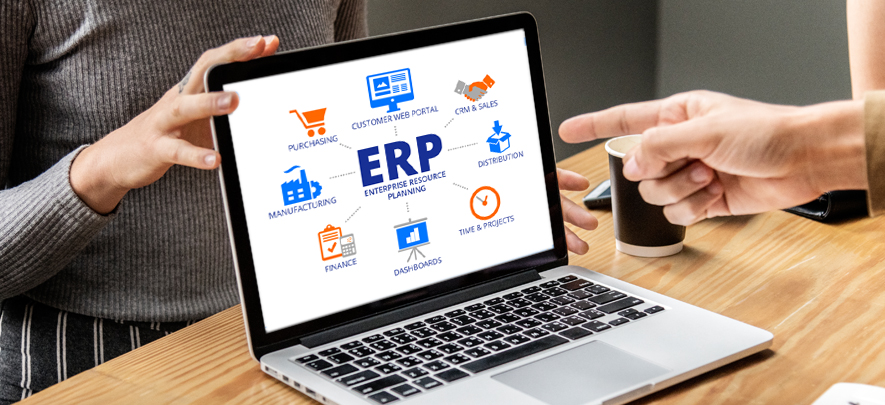ERP evaluation tips: Questions you should be asking

Digital & Technology
333 week ago — 7 min read
An enterprise resource planning (ERP) software is a strategic asset to any organisation and helps in optimising business operations. The right ERP system should not only enable your employees to make better decisions, work more efficiently, and reduce costs, but it should also enable you to plan and manage long-term profitable growth.
Choosing your new solution, wisely is therefore imperative to your future success. To help you with your ERP evaluation process, here are few tips in order for you to make the best selection.
1. Understand your internal business processes
Complete understanding of your business is the most important aspect of ERP evaluation. Document your internal processes and identify any processes that could be automated. Which processes can you be flexible with and which ones must absolutely remain the same? Is there anything that is confusing or redundant? ERP automates existing processes, but it can’t fix bad processes.
Also, it is advisable to understand your organisation’s strengths and weaknesses. If you do not understand these, it will be difficult to evaluate how the new ERP selection will impact them. Will the new ERP make your weak areas stronger? Will it somehow damage your stronger areas?
2. Define objectives
Creating a clear and extensive list of your requirements before you start looking for ERP software, is a good start. You need to take the time to look and evaluate each ERP vendor against these objectives and decide which system best fits your organisation’s needs.
3. Involve key stakeholders & heads of departments (HODs)
Lack of participation and input from key stakeholders in the evaluation stage can lead to poor acceptance and user adoption. They must be aware of the implementation timeframe, features, and budget. Department heads should also communicate what features they must have, and what they can live without. This ensures better adoption of the system by the users.
4. Check compatibility with existing systems
An ERP system might be easy to use but the benefit can be lost if it isn’t compatible with your existing systems. Ensure that the ERP solution has the ability to integrate with other systems and technology that your company already uses.
5. Be prepared for growth
You need a solution that is flexible enough to accommodate evolving business processes and new initiatives in your organization and is scalable enough to include additional users, has multiple add-ons available, eliminating the need of purchasing new systems. You should be able to phase in new ERP functionality as and when you need it. For businesses operating internationally make sure that the ERP solution supports multiple languages and currencies.
6. Ease of customisation
You need an ERP that can adapt and adjust to your dynamic needs while still providing value. Having customization capabilities in your software is pivotal for achieving that. It's also important to understand the difference between “configuration” and “customisation”. Configuration is usually easy to do and can be done by clicking on options available within your enterprise software. Whereas, customisation refers to the changing of the actual code of the software to suit your needs; which usually takes longer and is more cost intensive.
7. Reporting & analysis
Another item many organisations miss during the selection phase of an ERP system is reporting and metrics. What do you want to be able to gauge from the system? Is this possible via the existing, prebuilt reports in the system or will you have to pay extra to get custom metrics that will drive your business, hiring and resourcing? Opt for a solution that offers inbuilt customization features in reporting and analysis so that users can drill down information as per their own requirements.
8. Does the solution offer ease of use?
A good ERP should be easy for your people to understand and use. This will eliminate extensive training time and costs and accelerate adoption. Benefits can be amplified when the ERP extends to all parts of your operations. Consistent, end-to-end ease of use helps everyone communicate and collaborate.
9. Total cost of ownership
Avoid making the common mistake of focusing on the upfront investment. Identify long-term and recurring expenses as well. Take a close look at support and training. Pricing for these can be very hard to estimate. This can make a large difference between the lifetime costs of the system. Whether you deploy on-premise or in the cloud, you need to think beyond the cost of just the software. The true cost of ownership includes implementation, customisation, management services, regular training, and hardware for an on-premise solution or additional bandwidth for cloud-based options.
10. Carefully evaluate your options
What are the strengths and weaknesses of each solution you are evaluating? Do the due diligence and take the time to research to find out how many customers the vendor has, how stable the company is, and if they have any experience in your industry.
Ask your ERP vendor for at least three client references. Then ask the customers what went right, what went wrong and what they might have done differently. If a vendor can't provide at least three verifiable, happy customers, they may not have the experience you need.
Similarly, if you are a member of an industry association, ask colleagues for ERP recommendations. Dig deeper and learn more about the breadth of offerings and how the system will grow and adapt as your business evolves.
The right solution helps you tend to business by providing integrated, end-to-end visibility across your operation; delivering timely, relevant information that keeps you on top of the details and streamlines your business processes for peak performance. Make sure the solution offers a unified solution that goes beyond basic ERP functions to deliver a complete and timely picture of your business.
To explore business opportunities, link with me by clicking on the 'Invite' button on my eBiz Card.
Disclaimer: The views and opinions expressed in this article are those of the author and do not necessarily reflect the views, official policy or position of GlobalLinker.
View Kunal 's profile
Most read this week










Comments
Share this content
Please login or Register to join the discussion